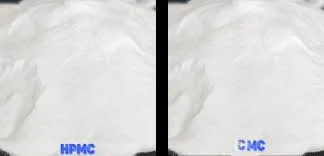
Desemba . 11, 2024 11:23 Back to list
redispersible polymer powder manufacturing process
The Manufacturing Process of Redispersible Polymer Powder
Redispersible polymer powder (RDP) is an essential ingredient in various industries, particularly in construction and coatings. It offers the benefits of enhancing adhesion, flexibility, and workability of formulations such as cement, mortar, and tile adhesives. The manufacturing process of RDP is a complex and delicate operation that involves several steps, from polymerization to spray drying, ensuring that the final product meets the required specifications for performance and quality.
Step 1 Polymerization
The first step in manufacturing redispersible polymer powder involves polymerization, which can be achieved through various methods such as emulsion, solution, or bulk polymerization. The most common technique for RDP production is emulsion polymerization, where monomers are dispersed in water along with surfactants and stabilizers.
This process begins by mixing water and surfactants in a reactor, followed by the addition of chosen monomers. Through the application of heat and initiators, such as peroxides or azo compounds, the polymerization reaction starts. The monomers react to form polymer chains, resulting in a stable emulsion of polymer particles suspended in the aqueous phase.
The control of variables such as temperature, pH, and monomer feed rate during polymerization is crucial to achieve the desired molecular weight and distribution of the polymer. This phase can take several hours, depending on the specific formulation and desired properties of the polymer.
Step 2 Stabilization
Once polymerization is complete, the emulsion must be stabilized to ensure that the polymer particles remain suspended and do not coalesce. This is accomplished through the addition of stabilizers, which can be a mix of ionic and non-ionic surfactants. These additives help to maintain the stability of the emulsion over time.
Understanding the zeta potential of the polymer particles is vital in this step; a suitable charge will help to prevent flocculation. Monitoring the stability of the emulsion over time ensures that the final product will have a long shelf life and consistent performance in application.
Step 3 Spray Drying
After achieving the desired emulsion stability, the next step is to convert this liquid polymer into a powder form through a process known as spray drying
. This technique involves atomizing the emulsion into fine droplets and then exposing these droplets to hot air in a chamber.redispersible polymer powder manufacturing process

As the droplets contact the hot air stream, the water evaporates, leaving behind dry polymer particles. The temperature and velocity of the air are carefully controlled to ensure that the polymer does not degrade during this process. Collecting the dried powder is done through cyclones or bag filters, which separate the fine particles from the exhaust air.
Spray drying not only produces RDP in a powder form but also helps in shaping the particle size distribution, which is critical for the performance of RDP in its final applications.
Step 4 Milling and Sieving
The dried redispersible polymer powder may undergo milling to achieve a specific particle size distribution that is suitable for various applications. This step is important because the performance of the RDP can significantly depend on its particle size.
After milling, the powder is typically sieved to remove any oversized particles and ensure a uniform texture. The granulation process might also be applied to enhance the flowability and reduce dust during handling.
Step 5 Quality Control and Packaging
The final stage of RDP manufacturing is quality control, where various tests are conducted to examine the powder's properties, such as solubility, viscosity, and the ability to form a film upon redispersion. These tests ensure that the product meets industry standards and performs effectively in the desired applications.
Once passed, the product is packaged in moisture-proof bags to prevent clumping and degradation. Proper labeling, along with safety data sheets, is also provided to inform customers about handling and storage.
Conclusion
The manufacturing process of redispersible polymer powder is a detailed and critical procedure that ensures the product's quality and functionality. From careful polymerization to precision in spray drying and thorough quality control, each step plays a critical role in delivering a product that meets the demands of various industry applications. As industries continue to evolve, advancements in RDP manufacturing will likely lead to even more innovative applications and products in the future.
-
Unlocking the Benefits of HPMC Products: A Gateway to Versatile Applications
NewsAug.07,2025
-
Unleashing the Potential of HPMC Ashland: A Comprehensive Look
NewsAug.07,2025
-
Tile Bonding Cellulose: The Key to Superior Adhesion and Durability
NewsAug.07,2025
-
Hydroxypropyl Methylcellulose Powder: The Versatile Component in Modern Pharmaceuticals
NewsAug.07,2025
-
Hydroxyethyl Cellulose: The Versatile Solution for Various Industries
NewsAug.07,2025
-
Hydroxyethyl Cellulose (HEC): The Versatile Polymer for Various Applications
NewsAug.07,2025







